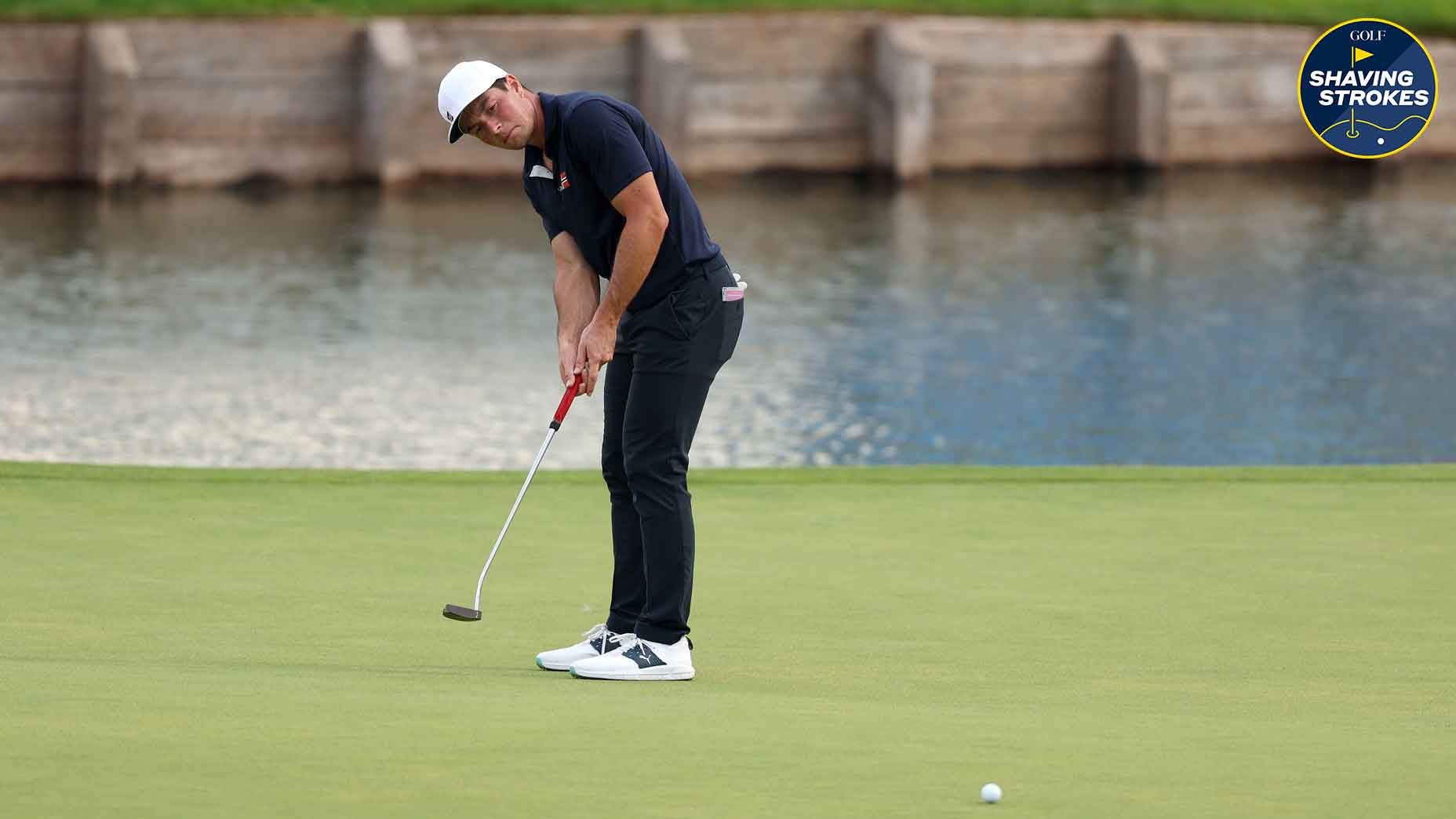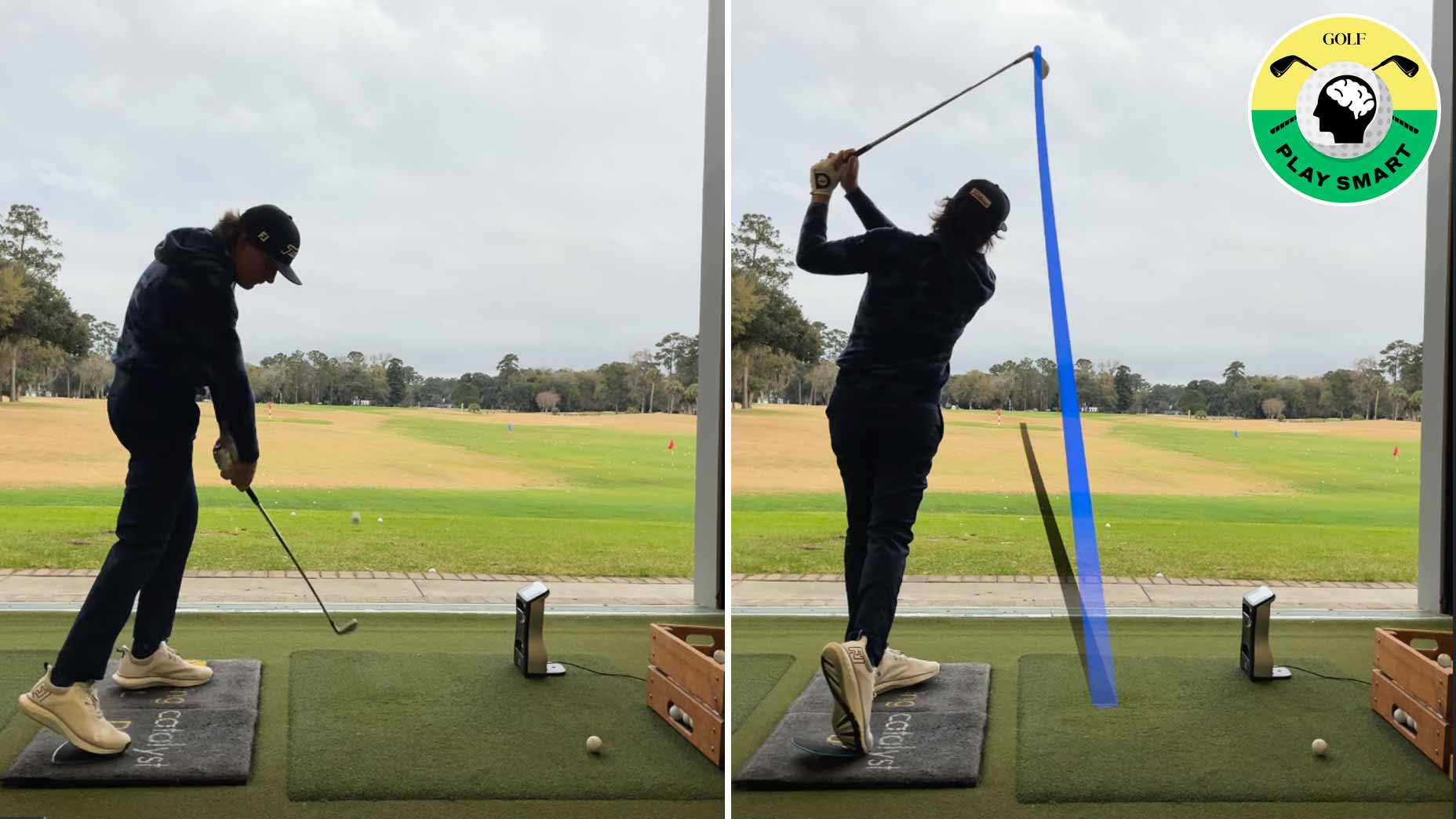When amateurs have a putt from over 30 feet, many of us approach the shot incorrectly — which can add strokes and, ultimately, result in three-putts.
Sure, we might go through our pre-shot routine by reading the green, figuring out the speed and distance, and checking our aim, but there’s a common mistake that then sets in — trying to hole it out.
Do you know how often a PGA Tour player makes a putt from 20-25 feet? The best golfer on Tour from this range in 2024 (Max Greyserman) only drained it 23 percent of the time, meaning an Average Joe like you or me have an even slimmer chance to do so.
Perfect your lag putting and eliminate 3-putts by…closing your eyes?!By: Maddi MacClurg
That’s where lag putting comes into play, which focuses on dialing in your speed and just putting your first putt close enough to sink the second putt.
So what’s the best approach when lag putting from long distances? In the video below, six-time PGA Tour winner Viktor Hovland shares his favorite tips, which should help you avoid the temptation of locking in on the cup and instead just worry about leaving it close.
Viktor Hovland says to ignore the hole when putting from long distances
In the video, Hovland details his approach on a putt from a whopping 45 feet — which no amateur golfer should ever seriously consider holing out, even if you’re feeling hot with the putter.
Instead of focusing on draining it, Hovland says it’s most important to just focus on speed, making sure you leave the ball somewhere close enough to the cup to make your following attempt.
“[On putts from this type of distance], it’s very important to have the right speed, which is where I’d say I spend most of my time getting ready for a new tournament,” Hovland says.
This ‘baseline’ putting drill will help you dial in your speed on the greenBy: Jessica Marksbury
Instead of worrying about making it, Hovland suggests picking a spot just over halfway to the hole and being intentional about rolling it over that spot.
“When you’re really far away from the hole, instead of looking at the hole and thinking how far you need to hit it to get it to the hole, I pick a spot about 60 percent of the way and think about how fast the ball needs to roll over that point to just end up close to the hole,” he adds.
As you address the ball, be locked in on that spot you’re aiming for, focusing on your stroke size to ensure you’ve got the right distance control.
“Once I get my line and get over the ball, I take a couple practice swings to kind of look and feel how far that spot is,” Hovland explains. “When I’m standing over the ball, the line doesn’t matter, the stroke doesn’t matter — all you need to be focusing on is the speed.”
By following Hovland’s tips, you’ll become a better lag putter, which relieves the anxiety to hole every putt you hit. With the right practice and feel, you’ll start to shave strokes off your scorecard in no time.

PING PLD Milled SE DS72 Hovland Edition Custom Putter
View Product












